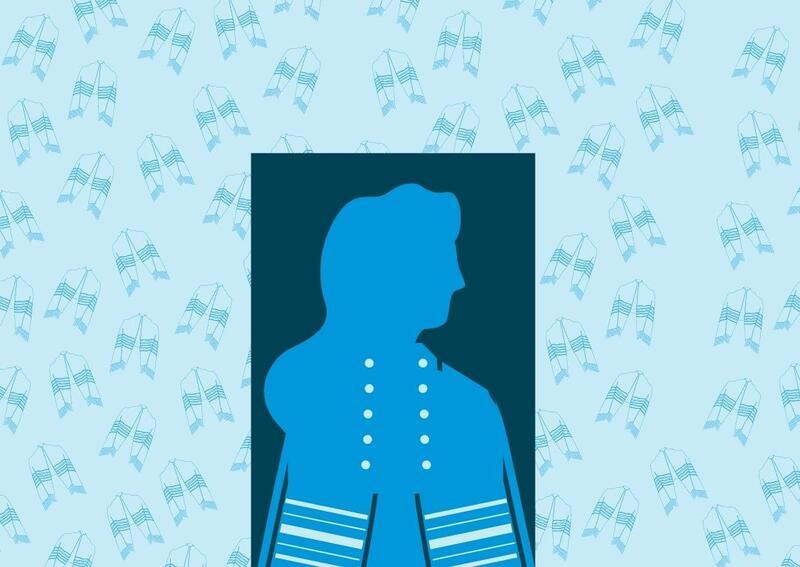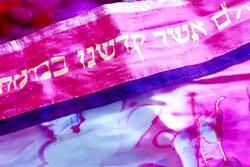Celebrate Women Engaging in Jewish Practice—Including Wearing Tallitot
The air was thick with humidity as I walked towards the Wall, ungracefully squeezing past women praying, little girls speaking in Hebrew, and my friends fidgeting in their long skirts and sweaters. It was the first excursion on my trip to Israel through Alexander Muss High School, and my classmates and I were visiting the Western Wall. During this tiyul (field trip), I witnessed a wide spectrum of religious observance; from my friends awkwardly leafing through prayer books, to women who wore tallitot and kippot, lost in deep prayer at the base of the wall. While seeing observant Jews should have been no surprise at one of the holiest sites in Israel, the significance of these women praying didn’t dawn on me until the bus ride back home. Conversing with one of my Israeli madrichim (counselors) on the trip back to Tel Aviv, I learned that women wearing tallitot at the Wall is part of a national debate regarding the extent of women’s rights to self-expression in religious spaces. My madrich explained that just a week before I arrived in Israel, the most recent of many violent acts against women praying at the Wall had taken place.
In a religion as aged and as rooted in tradition as Judaism, this probably shouldn’t have come as a shock. For much of its existence, followers of Judaism have excluded women from many religious practices, asserting that certain roles are just for men. But to a sixteen-year-old girl from the progressive Bay Area, it was jarring and disheartening to remember that an integral part of the way in which I practice Judaism was never intended for women.
The tallit, a religious prayer shawl, allows individuals of the Jewish faith to feel connected to God, and it’s said that wearing a tallit appeals to God’s mercy during prayer. From each of the four corners of the tallit hangs eight strings held together by four knots, which are called tzitzit. Wearing tzitzit is both a commandment and a mitzvah in Judaism, and, as such, many religious or observant Jews wear tzitzit during prayer, the high holidays, and for some, every day. As with many of the commandments in Judaism, women are theoretically “exempt” but not technically excluded from the practice of wearing a tallit. However, a subset of the Jewish community considers it to be not kosher—for lack of a better term—for Jewish women to engage in this practice.
Long before my trip to Israel, as a twelve-year-old preparing for my bat mitzvah, I was entirely unaware of the historical context of the tallit. The significance of the tallit for me lay simply in the fact that wearing one meant I was part of something bigger than myself; a tradition shared by my parents, grandparents, and ancestors. I felt that once I wrapped the tallit around my shoulders on my bat mitzvah day, I’d finally become a true member of the Jewish community: that I’d understand the Torah and its teachings in a new and enlightened way.
Although it was naive, my twelve-year-old understanding of the tallit’s importance wasn’t entirely wrong. After my bat mitzvah, I became more involved in the Jewish community: I taught students the Friday night prayers at Hebrew school, joined my local Jewish youth organization, and furthered my Jewish learning in confirmation class. While I can’t attribute all of this to the moment I first put on my tallit, I do feel that participating in this practice allowed me to feel included and accepted in the Jewish community.
There's a difference between being tolerated and being wanted and, for me, wearing a tallit proves that I’m wanted in the Jewish world—that my ideas and thoughts contribute to and enrich this community. I understand the inherent contradiction in these words; the act of wearing my tallit is in conflict with Jewish tradition. Yet, it’s also a practice which allows me to feel like I’m part of this tradition. To be a Jewish feminist means learning about Judaism's vast and beautiful history, while also confronting aspects of Jewish tradition that don’t promote equality. My experience wearing a tallit taught me that these seemingly incompatible ideals are not, in fact, mutually exclusive.
Which brings me back to this past summer, on the bus ride back from the Western Wall. My madrich took out his phone and showed me photos of women from the activist group, Women of the Wall, being accosted by a group of men. After bringing a Torah scroll to the Kotel for a bat mitzvah ceremony, a crowd of ultra-Orthodox men had ripped the prayer books out of the women’s hands and destroyed them. Nowhere in the photos did I see security officials or police—just crowds of people watching idly as these men vandalized and defiled the Torah scrolls.
After seeing these photos, I felt helpless and unsettled. The images felt worlds away from the Western Wall I'd just visited, where women peacefully prayed alongside each other. I wondered why no one rushed to help during this incident, and how something like this could happen in the first place. This frustration stayed with me as we made our way back to campus, and I resolved to do something about it when I got home. “Doing something about it” didn’t necessarily mean starting a movement or enacting radical change; for me, it counted to do something as simple as wearing my tallit to services for the high holidays, and gifting a tallit to one of my little cousins for her own bat mitzvah.
Though women wearing tallitot may be commonplace today in many Jewish communities, these images of harassment and complacency at the Wall serve as a reminder that the struggle for Jewish women to not be simply tolerated but also wanted in Jewish practices is ongoing. There’s certainly more work to be done, and in my life, that means partaking in aspects of my faith that were created by and for men. It’s empowering to wear my tallit in spite of (and because of) this exclusive history.
This piece was written as part of JWA’s Rising Voices Fellowship.







Excellent 👏👏🧑🧑
I want to be a spiritual Jewish woman.
I loved this piece. I am very, very saddened by the fact those supposed ultra- Orthodox men were really hoodlums❗️ I am very encouraged by the writer's plan to "DO something about it." GOOD for her❗️